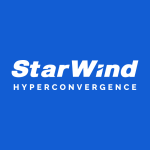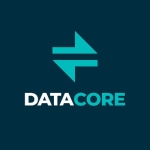What is our primary use case?
Our primary use case for this solution is mostly for various consolidations. The most common use case is for ACI (Application Centric Infrastructure) and consolidation like EDI (Electronic Data Interchange), knowledge bases, SQL server, and other databases. I require a very high IOPS (Input/Output Operations Per Second) for clients and this is what the solution provides.
What is most valuable?
I think probably the most important feature in this product is the caching capabilities using the storage-class memory.
What needs improvement?
Actually the technology is heading in the right direction so it is a little difficult to criticize the product itself for what we use it for. I think the online documentation needs a lot of work and so do the sizing tools. Considering what this tool is for, these tools are a very important part of the product.
I know what some of the features are that will be coming out because I do have the opportunity to check in with some of the people on the product team. Like for example, it will support thresh clusters, which means that I can have two nodes in one location and two nodes in another location belonging to the same cluster.
One more feature beyond that is the ability to converse with the cloud. This adds some processing abilities that are amazing. This type of solution is also something that many of the other competitors cannot say that they have. They just don't have the same capabilities in terms of the reach with the services that Microsoft currently has in the cloud. Microsoft's reach in the cloud is really very extensive.
For how long have I used the solution?
We have been using Microsoft Storage Spaces Direct since 2016.
What do I think about the stability of the solution?
In terms of reliability, it depends on how the customer looks after it. Especially if they are using the Ready Nodes and the Lenovo product they should have no problems with the stability of their solutions. But like anything else, obviously, the admins and the server folks need to be trained on it. I would not take for granted that just because this windows server is easy and that they have familiarity with it already that they do not need training and it will be perfectly easy to use. Like any technology solution, they do need training.
What do I think about the scalability of the solution?
Microsoft Storage Spaces is very scalable. You can go up to 16 nodes in one cluster. Then you can group the clusters together using something called cluster sets. You can build clusters as you want using various generations of hardware. So scalability-wise this product is amazing. And also you can add drives into existing notes and also on top of that you can add directly-attached storage to nodes that can expand just the storage without increasing the compute.
So the scalability is some of the architectural advantage of this solution.
How are customer service and support?
We do not have to contact Microsoft technical support because of the way the solutions are implemented. If you buy the Dell Ready Nodes or you buy the Lenovo solution, you can contact Dell and Lenovo directly. You do not actually need to contact Microsoft. Both Dell and Lenovo have a contract with Microsoft so that they get the support directly from Microsoft without the customer having to talk to Microsoft directly at all. These companies own that solution — both the hardware and the software.
Which solution did I use previously and why did I switch?
We do use multiple brands depending on client needs so our situation is not so much that we switch or adopt something and leave something else behind as the client might. From brand to brand there are differences and advantages.
The Dell product focuses on this thing called Ready Nodes. They are not really very prescriptive about what models of drive or caching devices that you should use with it, which is very good. But at the same time not very flexible because the product is so prescriptive in other ways. This makes decisions easier but limits some opportunities.
HP is very, very flexible. But maybe they need to be a bit more prescriptive. Sometimes if customers have too many choices, they have more probability of making the wrong decision and they end up buying the wrong solutions or solutions that are not optimal for their situation.
Lenovo has something that is really the equivalent to Ready Nodes. So from that perspective, you can say that Dell and Lenovo have probably the easiest way of helping users make choices when buying the solution.
How was the initial setup?
In the initial set up, if you have the right hardware, the setup is actually very straightforward. There are a lot of step-by-steps available online that you can follow, so it is not an issue getting it set up. I think that the problem is there are not enough details. We can use many different types of hardware and the different types of hardware have different specific requirements. Like for example, with the HBA (Host Bus Adapter) card, different brands use different models. Dell has their own line with the HB330, HP uses its own brand of HBA and RAID controller cards. Lenovo, of course, uses their own brand of cards as well — Qlogic. So different brands have slightly different requirements and as a result, the setup is probably not a friendly as probably could be.
What's my experience with pricing, setup cost, and licensing?
Cost-wise the product is one of the more affordable within the category of products.
What other advice do I have?
Anyone considering this solution should make sure that they test the features that they are specifically looking for to be confident that the solution has all the capabilities that they need. This is the advice I always give all participants in the events and the training that I conduct.
Users need to be comfortable with a solution that they are choosing and they have to make their choices for good reasons. You need to be exposed to it and do not just jump into any solution without being trained on it and learning more about it. Do not make excuses just for a chance to buy any solution made by any brand. That, of course, includes Storage Spaces Direct right.
On a scale from one to ten where one is the worst and ten is the best, I would rate Microsoft Storage Spaces Direct as a seven-out-of-ten in general as a product.
The reason for this rating is that there are both good things and some things that can be improved. From a cost perspective, Storage Spaces Direct is probably one of the most affordable. In terms of reliability, scalability, performance, security and so forth, it is definitely very good. The areas that I think they need to do better with are definitely in the area of the sizing tool, the documentation, and training for the customers. I feel they do not have enough training for the customers or for the partners who are also learning the solution and need to have a broad understanding.
When considering a product, it is not the technology alone that people should evaluate. They should evaluate the whole package if you want to get the right solution. They should learn about the people that they have to work and interact with when using the technology. Not everyone gets to go to Ignite in the US to learn directly from the product team. Many people have to depend on learning from the locals in their own country and the exposure of these local experts to higher-level training is still very limited.
Which deployment model are you using for this solution?
On-premises
Disclosure: My company has a business relationship with this vendor other than being a customer. Partner










It's been another successful year of production use. It's been rock solid and Windows Admin Center with Server 2019 (aka Azure Stack HCI) has really bridged many of the gaps I experienced in the beginning of S2D.